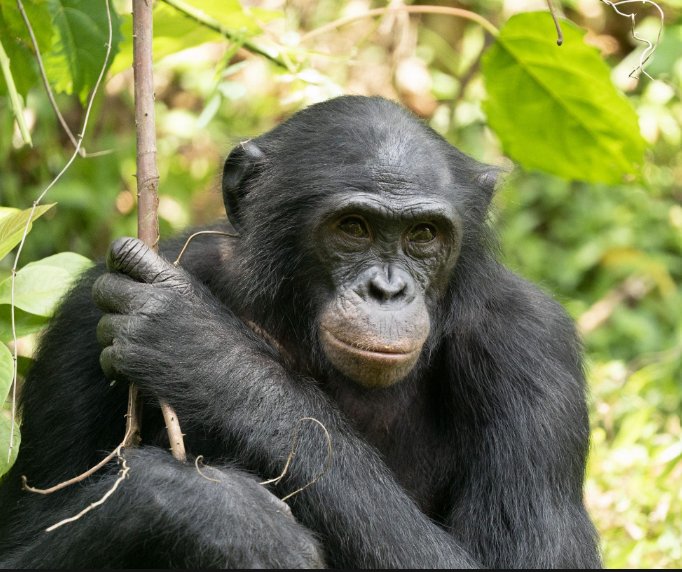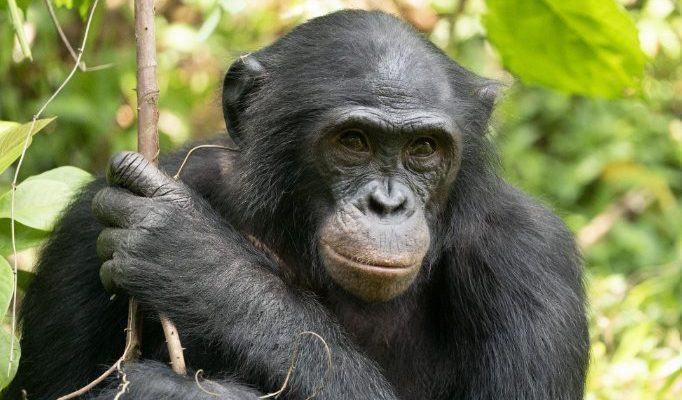
Bonobos are often misunderstood and overshadowed by their chimp cousins. They live in the lush rainforests of the Congo in Central Africa and have some truly remarkable traits. Think of them as the peace-loving hippies of the primate world, fostering cooperation and harmony instead of conflict. So, let’s dive into ten fascinating facts about bonobos that will change the way you think about these incredible animals.
1. Bonobos Are Known for Their Unique Social Behavior
What sets bonobos apart from other primates, like chimpanzees, is their remarkable social structure. Instead of resolving conflicts through aggression, bonobos often use *affectionate behavior* to maintain peace. They engage in social grooming, hugging, and even mating as a way to strengthen bonds and resolve disputes. This behavior is more about creating connections than reproducing, showing a strong sense of community.
You might be wondering why bonobos have developed such a unique approach to social interactions. One theory suggests that their environment influences their behavior. Living in a resource-rich habitat allows these animals to focus on social bonding rather than competition for food. In their world, love and friendship trump aggression, making them fascinating to study in terms of social dynamics.
This peaceful approach isn’t just beneficial for personal relationships among bonobos; it also helps maintain harmony within their larger social groups. Their cooperative nature brings stability, encouraging the sharing of resources and fostering a supportive community.
2. Bonobos Have a Strong Matriarchal Society
In the bonobo world, you might see some striking differences in sexual dynamics compared to other primates. Female bonobos hold a significant amount of power within their social groups. Known as matriarchs, they often lead the way and make crucial decisions regarding resource distribution and social structure. This *female-centered hierarchy* enables them to maintain order among the males, who tend to be more relaxed in their roles.
Here’s the thing: Female bonobos use their connections to ensure their status and safety within the group. They often form alliances with other females, which helps maintain their influence. Interestingly, these bonds are sometimes strengthened through sexual interactions, which serves as a way to establish trust and camaraderie.
This matriarchal structure is not just interesting; it’s essential for the group’s survival. The females work together to raise their young, providing a nurturing environment that promotes cooperation and social learning. This dynamic challenges traditional views of dominance in animal behavior, making bonobos an essential subject of study in understanding social evolution.
3. Bonobos Are Excellent Communicators
If you’ve ever watched a group of bonobos, you might notice they seem to have a *language* of their own. While we might not understand their vocalizations and gestures fully, research shows they have a rich range of communication methods. They use a combination of vocal sounds, body language, and facial expressions to convey messages and emotions.
One fascinating aspect of bonobo communication is how they express emotions. These animals can show joy, frustration, and even empathy through their actions. For instance, a bonobo will often comfort a distressed companion, demonstrating an understanding of another’s feelings. This emotional intelligence highlights their complex social interactions and unique cognitive abilities.
So why does this matter? Communication plays a vital role in forging social bonds and cooperative behavior among bonobos. By being skilled communicators, they can navigate their intricate social landscape more effectively, leading to a more harmonious lifestyle.
4. Bonobos Use Tools Just Like Chimps
Like their chimpanzee cousins, bonobos have a knack for using tools, showing their *intelligence and problem-solving skills*. They’ve been observed using sticks to extract termites from mounds or using leaves as sponges to soak up water. This ability to manipulate objects in their environment is a significant indicator of their cognitive capabilities.
Tool use among bonobos often varies depending on their specific habitat and available resources. For example, if they face a particular challenge, such as accessing food, they might innovate new ways to use tools effectively. This adaptability is what makes bonobos stand out as intelligent beings capable of learning and evolution.
To put this into perspective, think of it this way: just as humans adapt to their environments and develop new technologies, bonobos do the same in their natural habitats. Their ability to use tools emphasizes their intelligence, much like our own, and underscores the significance of environmental interaction for all species.
5. Bonobos Are Primarily Herbivorous
While many primates have varied diets, bonobos are generally considered *primarily herbivorous*. Their meals consist mainly of fruits, leaves, seeds, and flowers. The abundance of food in their Congo rainforest habitat allows them to thrive on this plant-based diet. However, they do occasionally eat insects, small mammals, and other protein sources.
You might find it interesting that the bonobo’s diet isn’t just about survival; it’s also about social interaction. These animals often share food, reinforcing their bonds and creating a sense of community. When one bonobo discovers a tasty fruit tree, it often invites others to join in the feast, promoting cooperation and social relations.
Bonobos exhibit food preferences based on taste and availability, indicating their ability to make choices. Their varied diet highlights the importance of food sources in shaping their social dynamics, spending time together, and fostering unity within the group.
6. Maternal Bonds Are Strong Among Bonobos
One of the most striking aspects of *bonobo behavior* is the strong maternal bonds. Female bonobos often remain close to their mothers well into adulthood, creating lasting connections that shape their social lives. This maternal influence plays a crucial role in teaching young bonobos about social norms and behaviors within their community.
You might think of it as a nurturing style that prioritizes emotional intelligence. When young bonobos learn how to interact with others by observing their mothers, they gain insights into the art of conflict resolution, cooperation, and social bonding. This teaching helps them thrive in their unique social structure.
Furthermore, the relationship between mothers and their offspring can extend beyond mere protection. Maternal care includes providing food, support during conflicts, and guidance in forming friendships. These strong ties significantly impact the overall dynamics of the bonobo community, ensuring stability and cooperation.
7. Bonobos Face Threats to Their Survival
Sadly, bonobos are classified as endangered due to various threats impacting their survival. Habitat destruction, primarily caused by deforestation and the illegal pet trade, has put their populations at risk. The Congo Basin, where they live, is experiencing significant environmental changes, threatening their homes.
You might be wondering why this is significant for us. Bonobos play a crucial role in their ecosystem, helping maintain the health of the rainforests through seed dispersal and contributing to biodiversity. Protecting these animals is essential not only for their survival but for the overall balance of their natural habitat.
Conservation efforts are underway, focusing on habitat preservation, anti-poaching initiatives, and community education. By protecting bonobos and their environment, we ensure the survival of these incredible creatures while also contributing to the well-being of the ecosystems they inhabit.
8. They Have Unique Reproductive Behaviors
Bonobos are quite different when it comes to reproductive behavior. While many animals exhibit mating rituals primarily for reproduction, bonobos often engage in sexual activity as a social tool. This means they use *sexual interactions* to foster relationships, ease tensions, and establish status within their groups.
It’s fascinating to see how bonobos use sex in ways that emphasize their cooperative nature. For example, they might engage in sexual acts after a conflict to reinforce bonds and show forgiveness. This approach stands in stark contrast to many other species, where mating is strictly about reproduction and often accompanied by aggression.
This unique behavior showcases bonobos’ *social intelligence* and capacity for emotional connection. Their approach to reproduction can teach us valuable lessons about the nature of relationships and how intimacy can be used to promote harmony.
9. Bonobos Have a Unique Way of Parenting
One remarkable aspect of bonobo parenting is their *teamwork*. Both males and females contribute to raising young bonobos, creating a supportive community for the next generation. This collaborative parenting style prepares young bonobos for the social complexities they’ll encounter as adults.
In a bonobo group, you’ll often find multiple mothers nursing, comforting, and teaching their young. This shared responsibility ensures that each bonobo pup receives the care and attention it needs to thrive. It’s not just about nurturing but also about creating a stable environment to learn social skills.
This cooperative approach to parenting reflects the overall ethos of bonobo society, where harmony and support are prioritized. By working together, they set their young ones up for success in a world that values strong social connections.
10. Bonobos May Hold Keys to Understanding Humans
Given their close genetic relationship to humans, bonobos offer exciting insights into our own behavior and social structures. Studying bonobos can shed light on the evolution of *social interactions, empathy*, and communication within our species. Their unique behaviors provide a fascinating lens through which we can examine our own societal norms.
Researchers often look to bonobos to understand concepts like cooperation, conflict resolution, and the role of aggression in social dynamics. By analyzing how these creatures navigate their social challenges, we may gain a deeper understanding of the complexities of human relationships.
Moreover, studying bonobos encourages us to reflect on our values related to cooperation and empathy. Learning from their peaceful, cooperative nature can inspire us to incorporate these traits more into our own lives, ultimately leading to a more harmonious existence.
In conclusion, bonobos are more than just another primate species. They’re fascinating creatures that challenge our understanding of social dynamics, communication, and cooperation. As we learn more about them, we can appreciate not only their unique adaptations but also the vital role they play in the broader ecosystem. Protecting bonobos and their habitats ensures their survival and enriches our understanding of the natural world.

